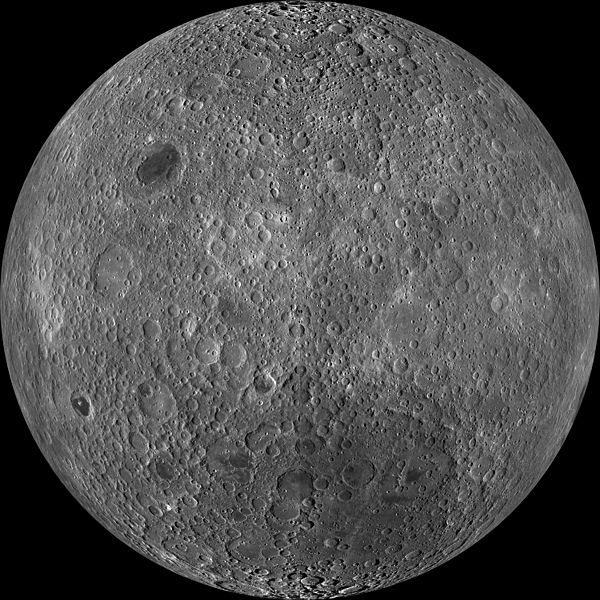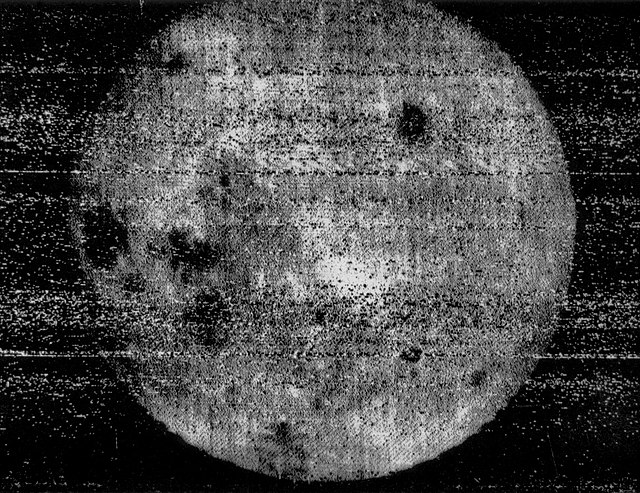The near side of the Moon is the lunar hemisphere that always faces towards Earth, opposite to the far side. Only one side of the Moon is visible from Earth because the Moon rotates on its axis at the same rate that the Moon orbits the Earth—a situation known as tidal locking.
Detailed view by NASA's Lunar Reconnaissance Orbiter
Ancient rift valleys – rectangular structure (visible – topography – GRAIL gravity gradients) (October 1, 2014).
Ancient rift valleys – context.
Ancient rift valleys – closeup (artist's concept).
The far side of the Moon is the lunar hemisphere that always faces away from Earth, opposite to the near side, because of synchronous rotation in the Moon's orbit. Compared to the near side, the far side's terrain is rugged, with a multitude of impact craters and relatively few flat and dark lunar maria ("seas"), giving it an appearance closer to other barren places in the Solar System such as Mercury and Callisto. It has one of the largest craters in the Solar System, the South Pole–Aitken basin. The hemisphere has sometimes been called the "dark side of the Moon", where "dark" means "unknown" instead of "lacking sunlight" – each location on the Moon experiences two weeks of sunlight while the opposite location experiences night.
Detailed view with Mare Moscoviense visible, by the Lunar Reconnaissance Orbiter (LRO)
The 7 October 1959 image by Luna 3, which revealed for the first time the far side of the Moon. Clearly visible is Mare Moscoviense (top right) and a mare triplet of Mare Crisium, Mare Marginis and Mare Smythii (left center).
The far side of the Moon, with Mare Marginis and Mare Smythii visible, photographed by Apollo 16 in 1972. It is much more cratered than the near side of the Moon.
The first panorama from the far side of the Moon taken by Chang'e 4








